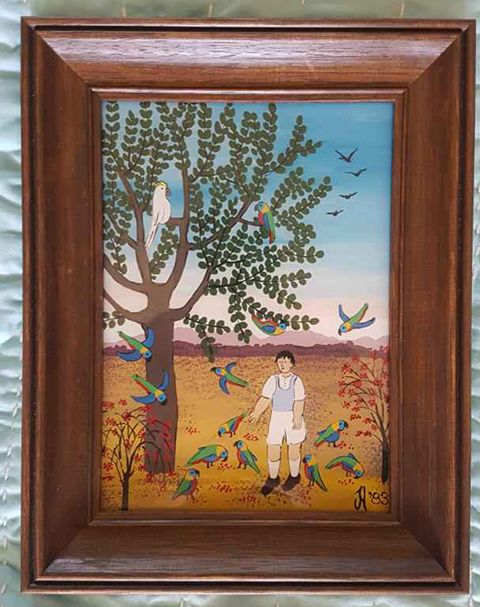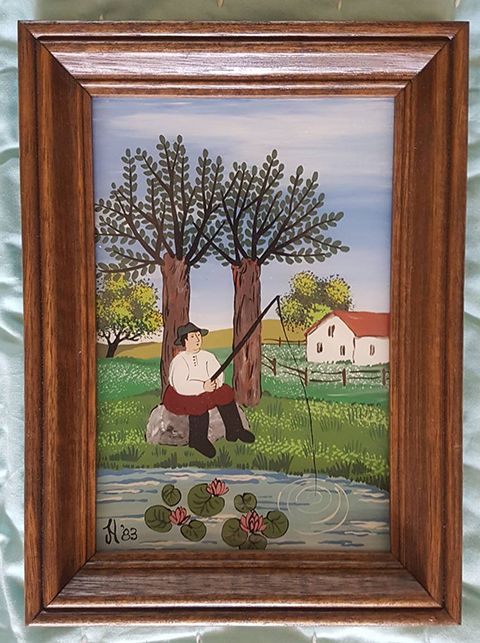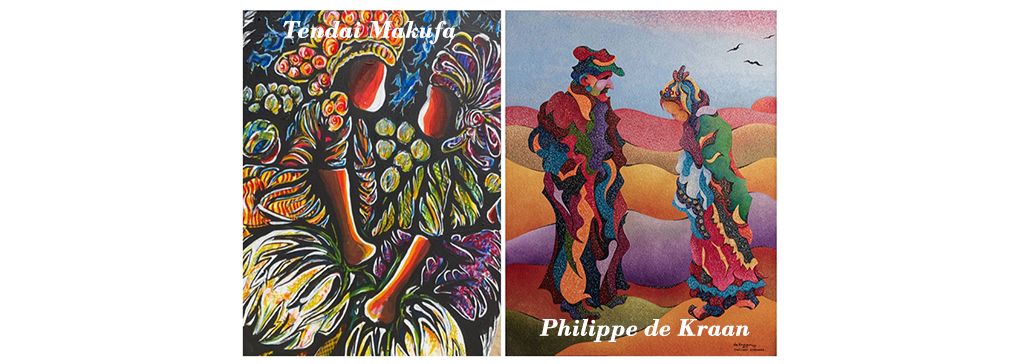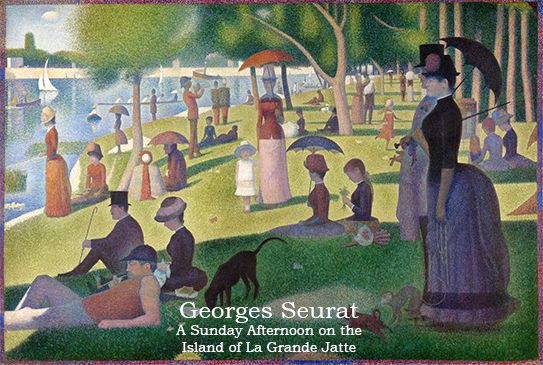June Mailbag 2023 No 2

First item (or items) is from Andrew one of the AnArt4Life team and also a remarkable Art Collector especially of the delightful works of Australian Outback artist Hugh Schulz. But today something different. Andrew also has some paintings by Australian artist Johanna Hildebrandt and recently added two more to his collection.


Andrew has explained that these two paintings by Johanna Hildebrandt are painted in the tradition naive style on glass. The two paintings above were created way back in 1983 and nowadays Johanna concentrates on paintings arising from inspiration gained from the Australian landscape. We will return later on to review the latest works from Johanna Hildebrandt which are quite different and show the development of her as an inspirational artist.
Andrew has also purchased some new Hugh Schulz paintings which we will be seeing very soon.
Recently I compared the works of Philippe de Kraan with those of Tendai Makufa. If you missed this please check it out in order to better appreciate the response which follows.

Monic Joan in Tanzania writes:
You have cleverly revealed to me why some artist's appeal to me, more than others. The consciousness and inner spirit of the artist, needs to be infused in the painting, whatever the topic is. Tendai has a joy of life and fertility in his soul, and he expresses that with his round fruits, round women and round containers that dazzle with all the colourful patterns that he embeds in the objects in his paintings. The carefree, sunny life exudes from his works, although in fact they are all working very hard.
Then Philippe, who obviously had a soft and compassionate heart, displays that feeling of tenderness and joy, in what I call his " patchwork" painting. The painting of "The Old Man", is in every way enhanced by the dabs of paint, that etch out the subject's age, and the years of experiences that he has perhaps endured and enjoyed. Then the painting," Blossom,' bespeaks of the baby's love and trust in his mother, and equally her devotion and delight in her child shines out from the creation. The colour patterns and shapes that he chooses, emphasize the togetherness and emotions of the two figures.
It is apparent that Seurat and Cignac had mathematical, musical and sympathetic inclinations, and this is sharply exposed in their exquisite creations, with the pointillism characteristic. The figures, trees and backgrounds scintillate with the myriad points of colour. They wished to unveil the nature of their subjects with an empathy that rejoiced in their very being . Seurat's trees are bejewelled songs of glory.
I need to feel the emotions of the artist, and to understand what they were trying to reveal. With Henri de Toulouse-lautrec and Pierre Bonnard, that instinctive feeling is not always present, so I am not particularly drawn to their work.
Thank you so much for your wonderful exposition of the differing artistry of the painters. M. Broom Tanzania
From Maureen in Birchip in Central Victoria we had this fascinating comment on the Philippe's painting on the two people facing each other.
Dear Anne and Julie, for some strange reason the painting of the two people reminded me of the Millet paintings which were on the walls of my boarding school classroom at Sacred Heart College in Ballarat in 1963 “The Angelus” and “The Gleaners”. We studied them often and of course stopped for the Angelus at midday each day. We always had this thought that people all over the world stopped like that in the midst of there day to pray and being taught about other artists who painted that topic, none of whom I can remember. It was common to do so in Europe.
I wonder what those two brightly coloured people were talking about or could they have been praying too? The thought always comes back to me when I see paintings of two people who seem to be conversing….. the Millet painting was nearest my desk and at a certain time each afternoon, I had to pull down a blind so the sun would not damage it. Wow betide me if I forgot. The only pattern in it I guess was the 12 noon prayer time as we all stood and said prayers which I cannot now remember and looked at the painting which was not very big, about ruler size with a black frame. “Pour forth we beseech thee your blessings” is about all I can remember. Thank you both for all the blessings you “pour forth” at all hours of my day without a bell to herald them.
Maureen Donnellon
Thank you Maureen - you have me now going back to look at Millet paintings - especially The Angelus and The Gleaners - and definitely a post coming up.
But today - back to Seurat...

Hi Julie
I think that Seurat had an instinctive awareness that everything in the world is composed of atoms, and that every atom had its own individual light. So he portrayed the atoms with mathematical precision, juxtaposing the 'lights', and thereby producing a scintillating effect in his art.
Whether he was painting trees (absolutely marvellous), figures or the sea, the sparkle was there. He probably painted the same scene, many times, at different hours of the day, to discern the dominating light for each detail.
What a pity the he died so young, but at least, he set the path for pointillism.
Another quality that I personally enjoy with Seurat's work, is that they all depict scenes of tranquillity- people bathing; or sitting in the park; farmers in the fields; and even the more energetic scenes of the Dancers and the Circus, invoke thoughts of pleasure and beauty. Today, the popular themes are blood and thud - perhaps that is a sweeping statement - but that is my perception. Thank you Julie for this evocative post on Georges Seurat. Thank you, Georges Seurat! M.Broom Tanzania
Thank you so much Monica Joan - I now look at Seurat with fresh eyes and mind!
A TagCloud Day tomorrow on Patterns because we have written several posts on this topic but watch out for the posts on patterns in pottery ware thanks to Julie's knowledge and interest in this area of art.

